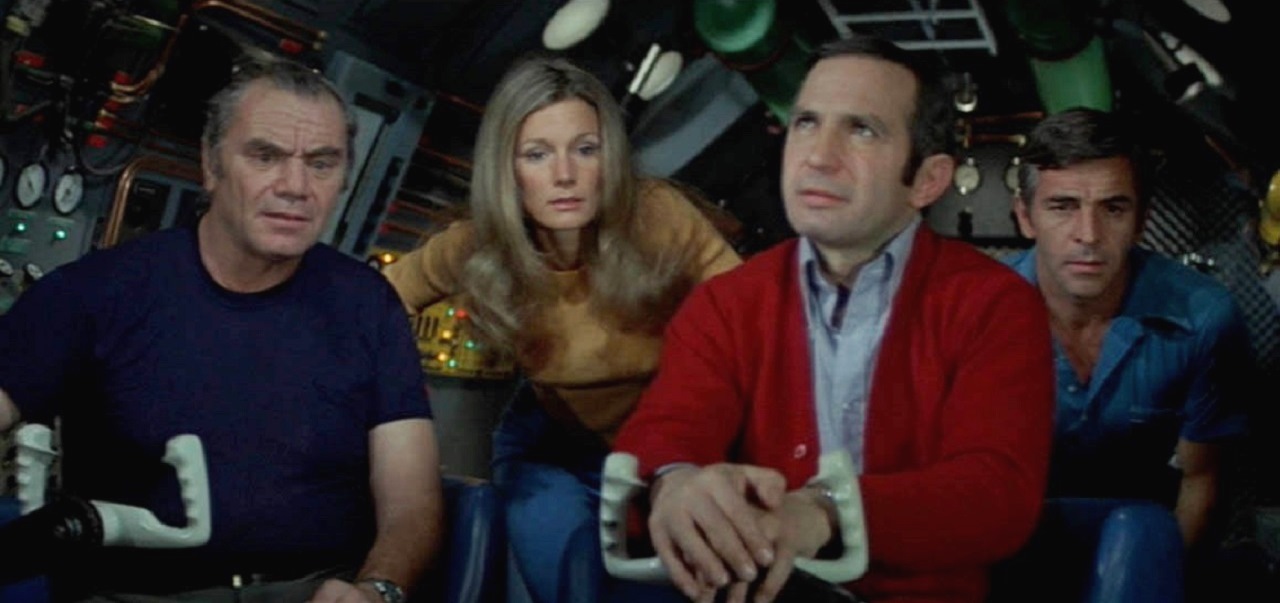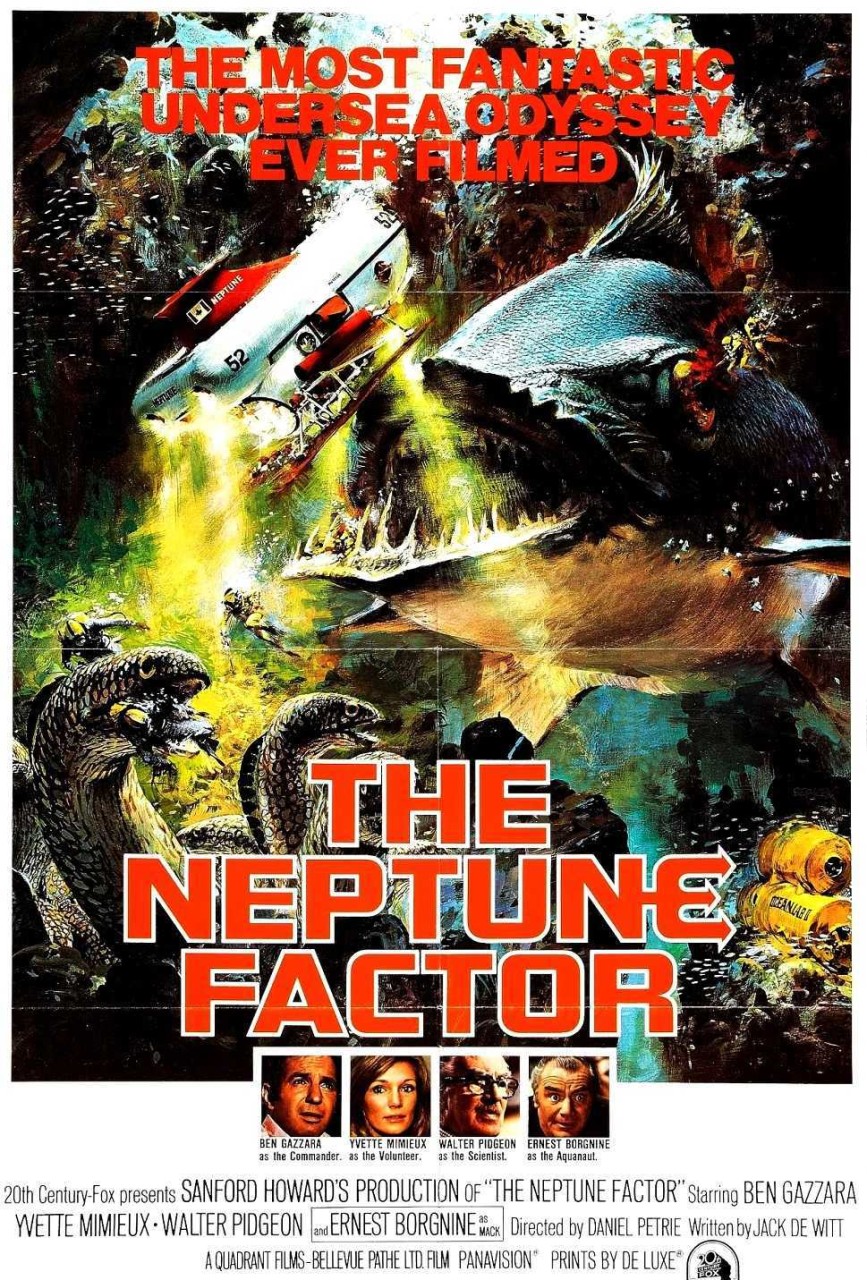Crew
Director – Daniel Petrie, Screenplay – Jack De Witt, Producer – Sanford Howard, Photography – Harry Makin, Music – Lalo Schifrin, Additional Music – William McCauley, Production Design – Dennis Layton & Jack McAdam. Production Company – Quadrant Films/Bellevue Pathe.
Cast
Ben Gazzara (Commander Blake), Ernest Borgnine (Donald ‘Mack’ McKay), Yvette Mimieux (Dr Leah Jensen), Walter Pidgeon (Dr Andrews), Donnelly Rhodes (Bob Cousins), Chris Wiggins (Captain Williams)
Plot
Engineers and divers are completing work on Oceanlab II when an underwater earthquake sends it tumbling into Muir Seamount trench with three men aboard. The Neptune submersible, which has been built for deep-sea diving, is brought in to attempt a rescue. Once down in the deeps, the crew encounter an amazing but also dangerous array of marine flora and fauna that has been grown to giant-size by volcanic heat.
The Neptune Factor: An Undersea Odyssey was one of a handful of underwater adventure films that came out during the late 1960s/early 1970s that had clearly been inspired by the success of Irwin Allen’s Voyage to the Bottom of the Sea (1961) and the popular tv series spun off from it, Voyage to the Bottom of the Sea (1964-8). Others in this mini-fad of ‘inner space’ exploration films included The Underwater City (1961), Around the World Under the Sea (1966), Destination Inner Space (1966) and Irwin Allen’s cinematically-released tv pilot One Hour to Doomsday/City Beneath the Sea (1971), as well as the Gerry Anderson puppet series Stingray (1962-4). (For a more detailed listing see Underwater Adventures).
The Neptune Factor: An Undersea Odyssey is usually spoken of with derision by all who see it. For at least the first third, it plays out as a slightly better budgeted episode of Voyage to the Bottom of the Sea. The dramatics are stolid, the dialogue is fairly bad – Walter Pidgeon and Yvette Mimieux exchange lines like “I wonder if Einstein’s Theory of Relativity ever applied to beauty?” to which she replies “Did anyone ever tell you, doctor, you have a very ‘fishy’ way with the ladies?”
The science is atrocious – while lip service is paid to the need to have special vehicles capable of withstanding the pressure at the depths, the inhabitants of the vehicles are able to go swimming outside as though this were a law that only applied to submersibles, and of course nothing is dealt with concerning the problems of pressure readjustment when the submarine resurfaces. The model effects are not convincing, although the film does at least go underwater to film the diving scenes.

Of course, what makes The Neptune Factor different to all the other Voyage to the Bottom of the Sea copies is the influence of 2001: A Space Odyssey (1968), as clearly demonstrated by the subtitle An Undersea Odyssey. The journey down into the trench in the latter half of the film is clearly intended along parallel lines to the psychedelic journey into transcendental space that came in the latter section of 2001.
Alas, the results are thoroughly underwhelming, with any suspension of disbelief being ruined by the banal use of optically enlarged flora and fauna to represent the supposedly giant-size marine life there. All the would-be initial wondrousness of the journey is shattered the moment you sit there thinking, “Wasn’t that a giant goldfish that just swam past?” In truth, there is nothing more wondrous here than a visit to one of those oceanariums that contain glass tunnels with magnifying windows. What finally makes the films descent into laughability complete is when it gets to the giant crab, which is represented by an ordinary-sized crab pushing a highly unconvincing model of the submersible about, all accompanied by basso laughing effects on the soundtrack.
Canadian born director Daniel Petrie had a long history working in television, back to the days of live broadcast tv in he 1950s and through classic works like the mini-series Sybil (1976). He gained attention as a director with A Raisin in the Sun (1961) and made other works over the years including The Betsy (1978) and Fort Apache The Bronx (1979). His other genre works include:- the werewolf tv movie Moon of the Wolf (1972), the miracle healing film Resurrection (1980) and Cocoon: The Return (1988).


